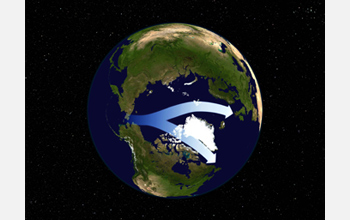|

Press Release 08-208
Historical Ecology Increases Understanding of Earth's Past and Future

Interdisciplinary research is critical to expanding our knowledge of the evolutionary history of the North Atlantic and predicting the environmental effects of climate change
November 20, 2008
The November issue of Ecology is a special issue devoted to the efforts of the Coordinating Research on the North Atlantic (CORONA) network. The group, which includes ecologists, geneticists, paleontologists and oceanographers, among others, met on five separate occasions with the goal of expanding the scope of work performed across the North Atlantic, both geographically and scientifically. The resulting papers are comprehensive reviews of the field that cover topics including ecology, climate change and evolution, from both a geographical and historical perspective. In order to understand the impact of human activity on our environment, we first need to understand the history of our planet and the species that reside here. Charles Darwin spent five years abroad studying plants and animals and collecting fossils from the Galapagos Islands. In contrast, modern day scientists aim to characterize much larger ecosystems. Large-scale interdisciplinary collaborative efforts such as CORONA aim to deliver an accurate 'big picture' view of ecosystems and the environment. Researchers in the CORONA network study the North Atlantic as a model of species invasion. Approximately 3.5 million years ago the Bering Strait opened, allowing marine organisms from the Pacific to migrate to the Atlantic. The CORONA network brought together evolutionists who have studied this grand natural experiment from a historical perspective, and ecologists and oceanographers who look at what is happening today. The goal of these collaborations is to enhance our understanding of how past events contributed to the world we know today so that we may better predict the effect of current events on our future environment. "Now that the Arctic Ice Cap is melting, a new invasion has begun," says Cliff Cunningham, director of the CORONA network and guest editor of this issue of Ecology. "Studying comparative ecology across the Atlantic gives us an idea about how important each species is to the community. This kind of information can help us predict which species may come across with increased warming. We now have the technology to take on bigger questions by doing large-scale surveys of many different species. It is the coordination of these efforts that is key." The CORONA network collaboration is the result of efforts to foster interactions between scientists across disciplinary, organizational and geographical boundaries via the Research Coordination Networks (RCN) program at NSF. Unifying topics for these awards range from organisms to techniques to geographical areas.
-NSF-

Media Contacts
Lisa Van Pay, NSF (703) 292-8796 lvanpay@nsf.gov
Lily Whiteman, NSF (703) 292-8070 lwhitema@nsf.gov
Principal Investigators
Cliff Cunningham, Duke University (919) 660-7356 cliff@duke.edu

The National Science Foundation (NSF) is an independent federal agency that
supports fundamental research and education across all fields of science and
engineering, with an annual budget of $6.06 billion. NSF funds reach all 50
states through grants to over 1,900 universities and institutions. Each year,
NSF receives about 45,000 competitive requests for funding, and makes over
11,500 new funding awards. NSF also awards over $400 million in
professional and service contracts yearly.
 Get News Updates by Email Get News Updates by Email
Useful NSF Web Sites:
NSF Home Page: http://www.nsf.gov
NSF News: http://www.nsf.gov/news/
For the News Media: http://www.nsf.gov/news/newsroom.jsp
Science and Engineering Statistics: http://www.nsf.gov/statistics/
Awards Searches: http://www.nsf.gov/awardsearch/
| 

